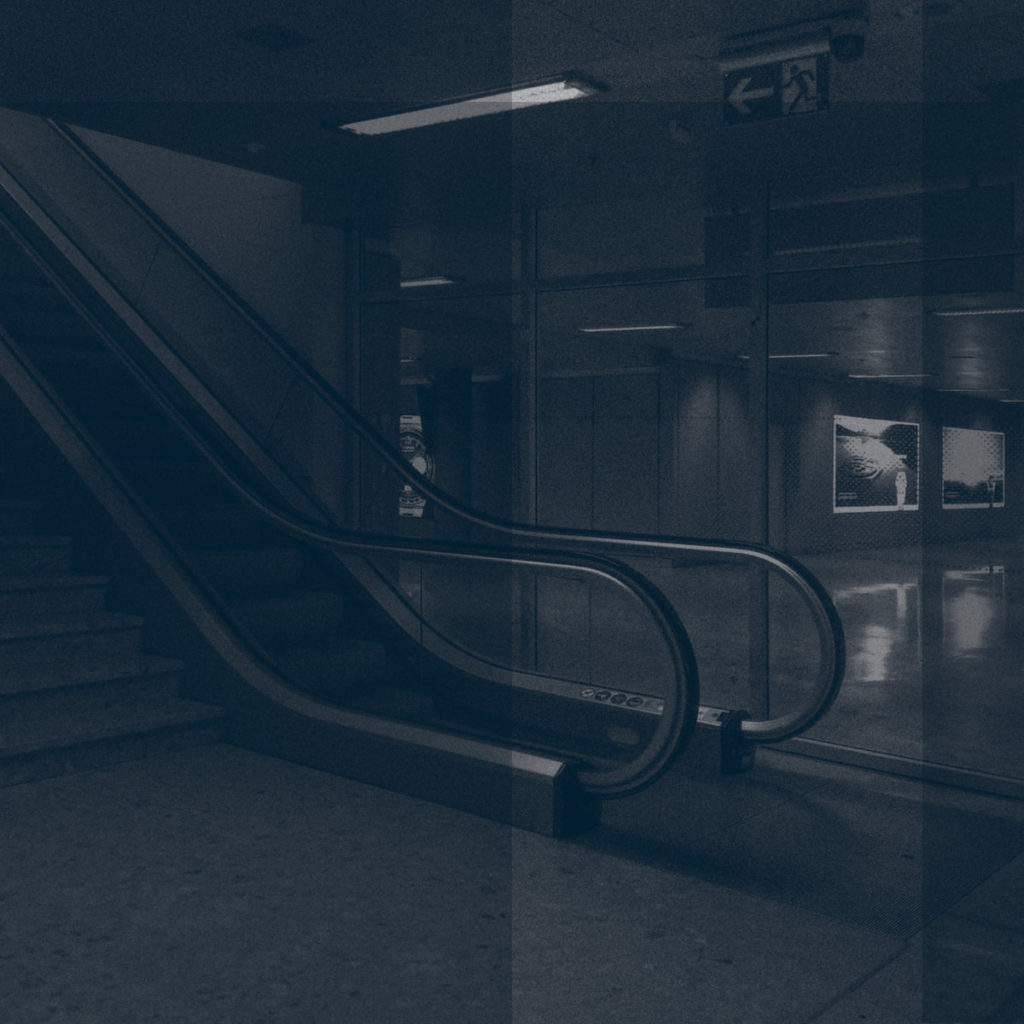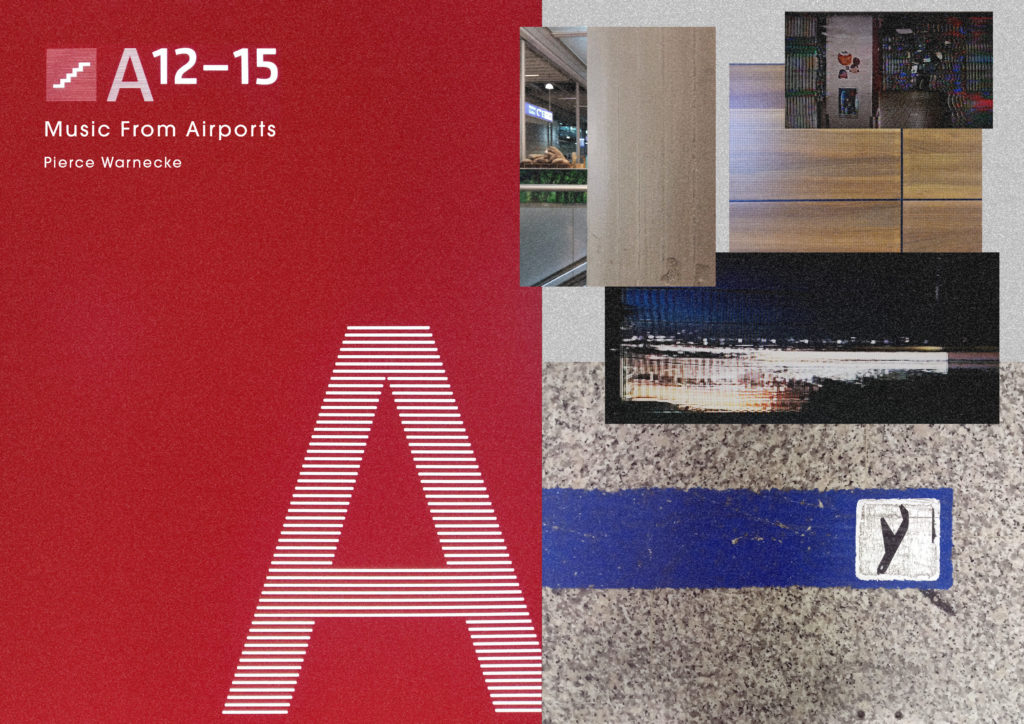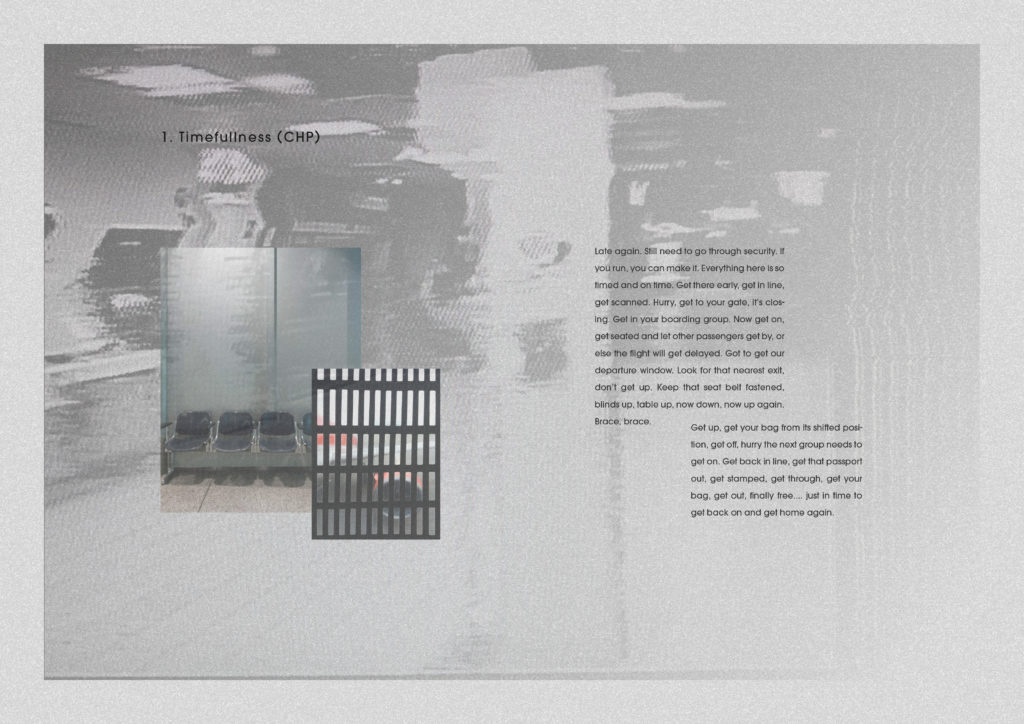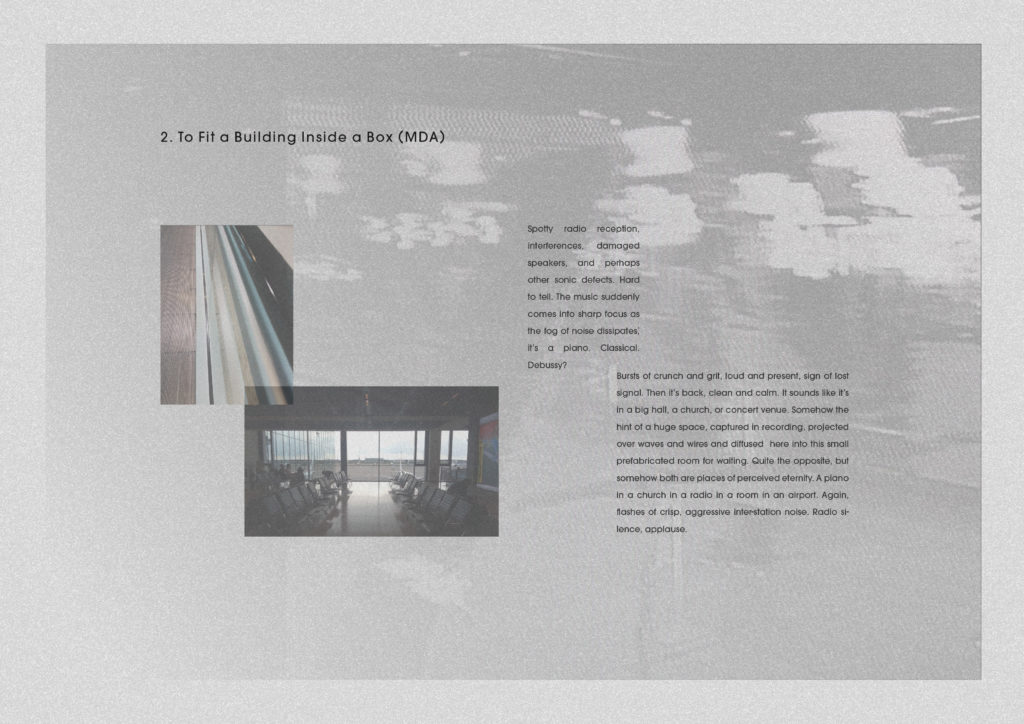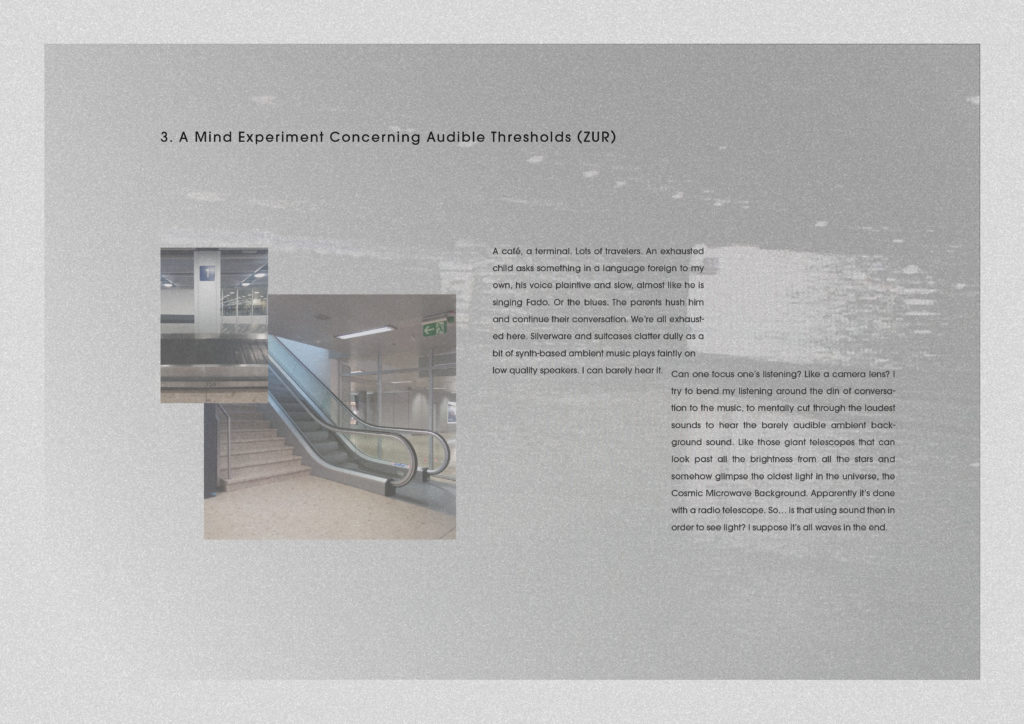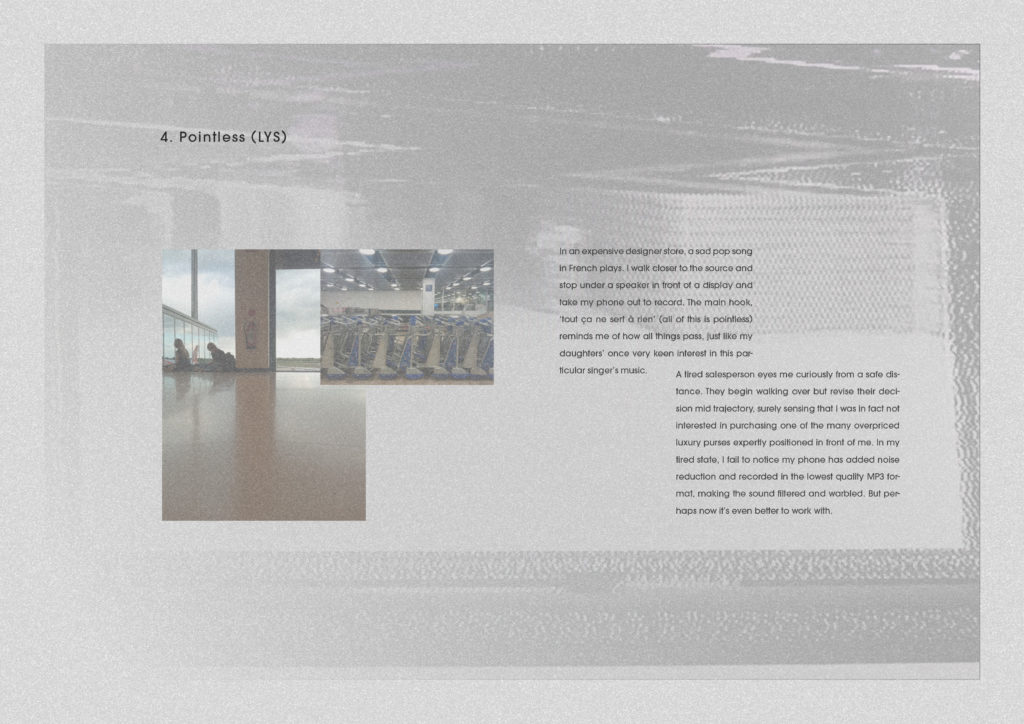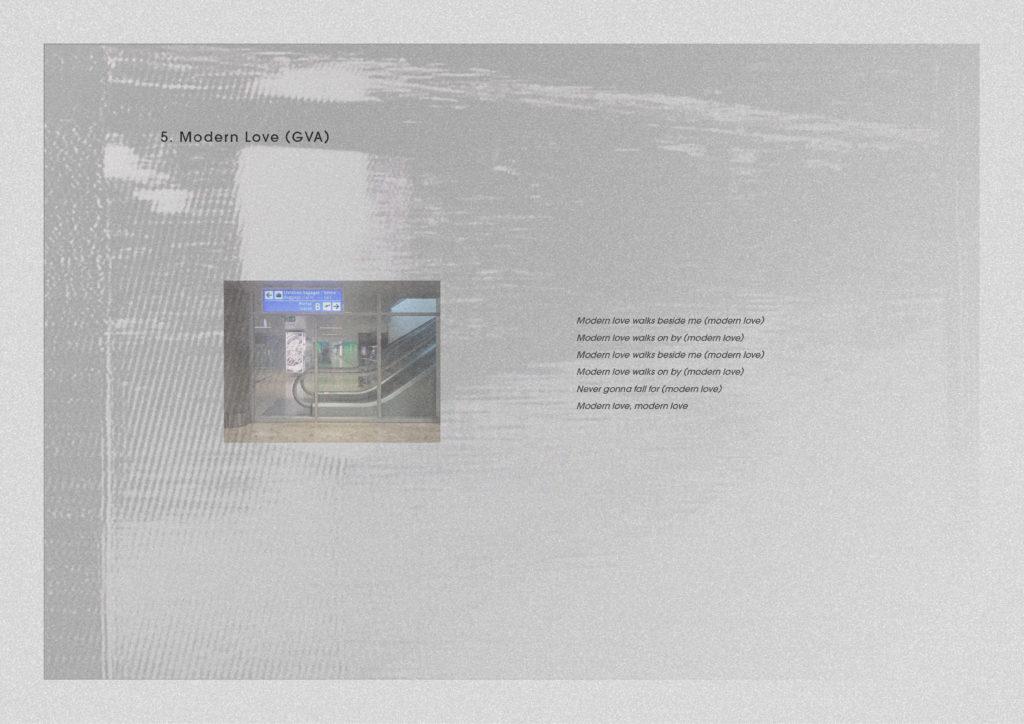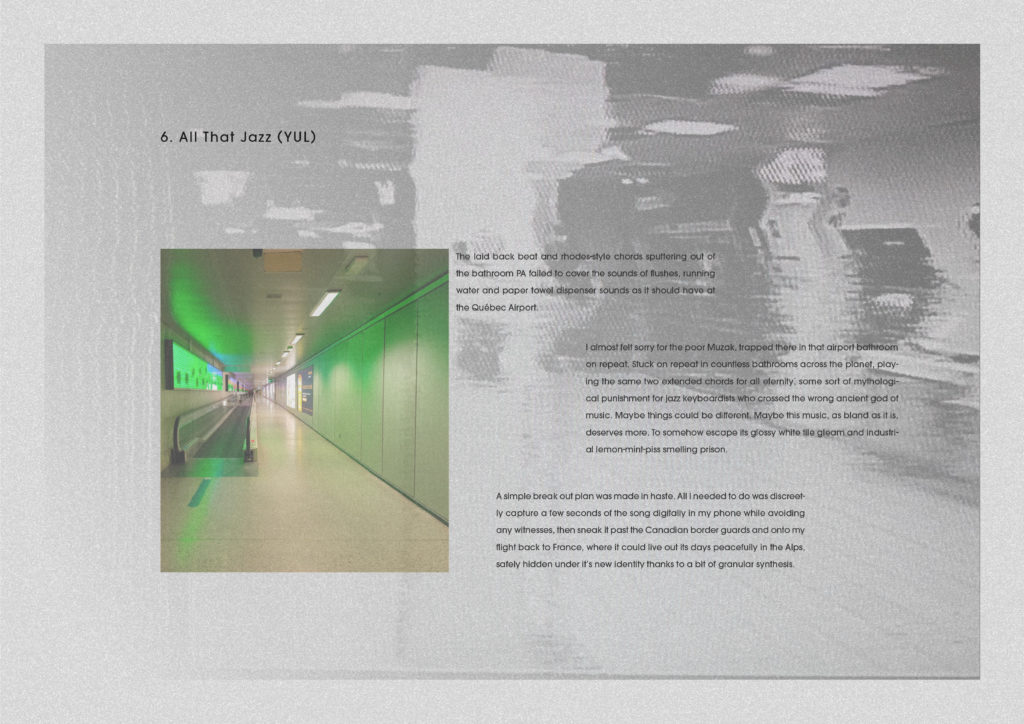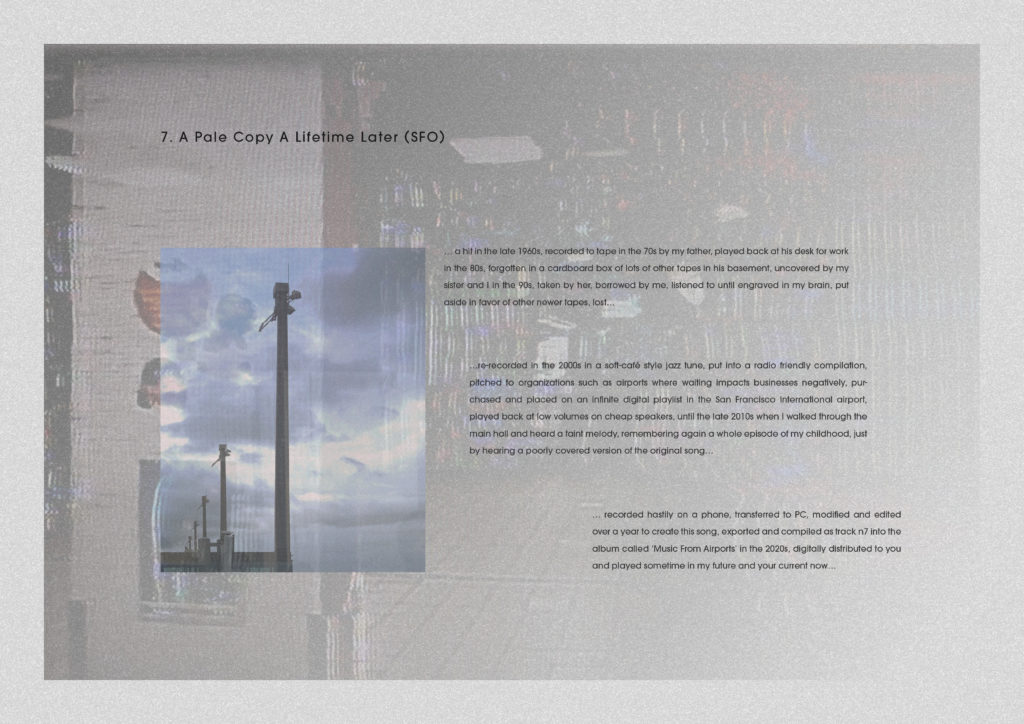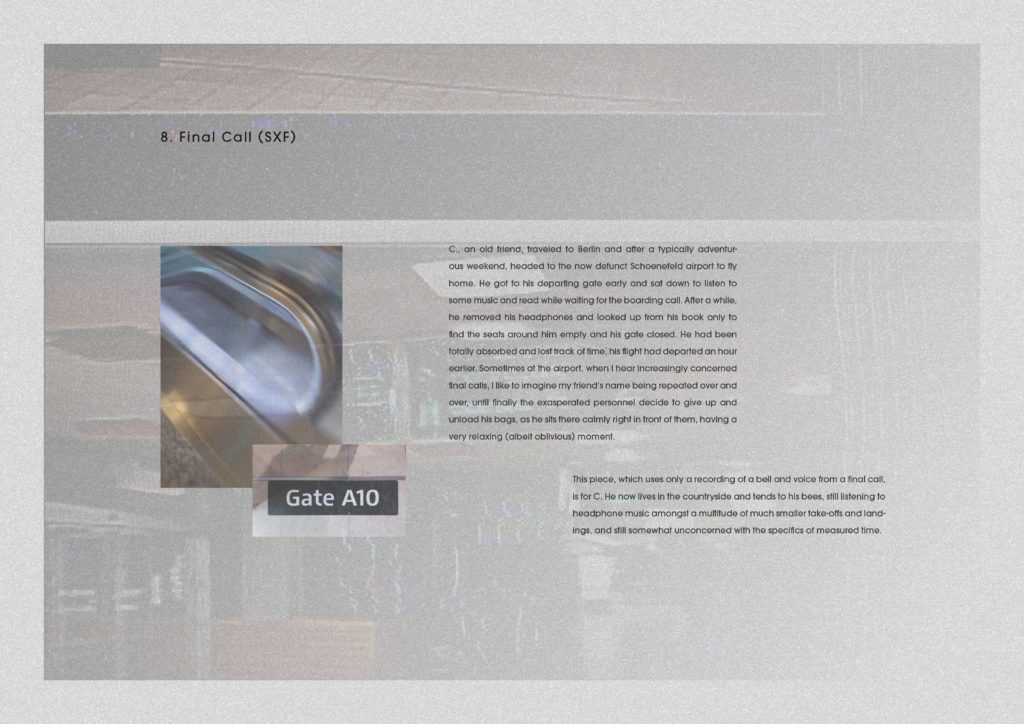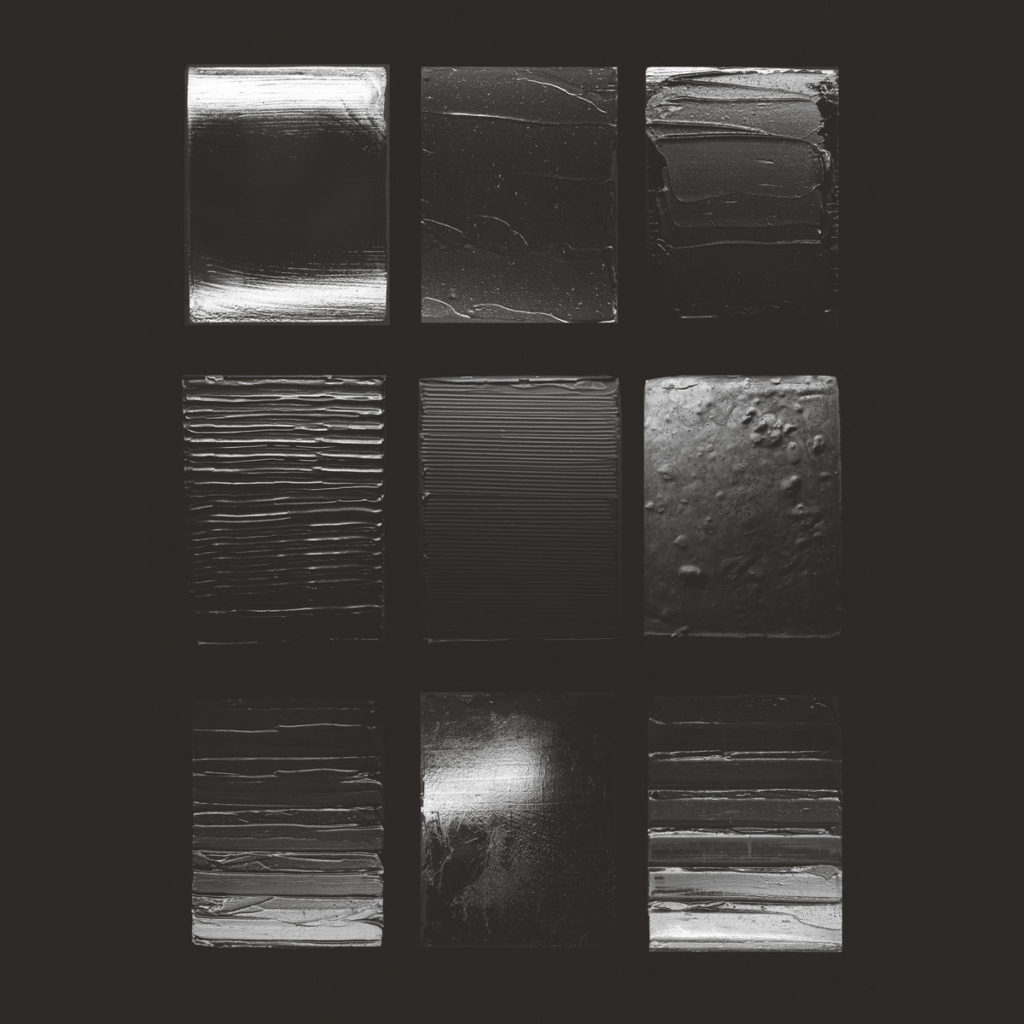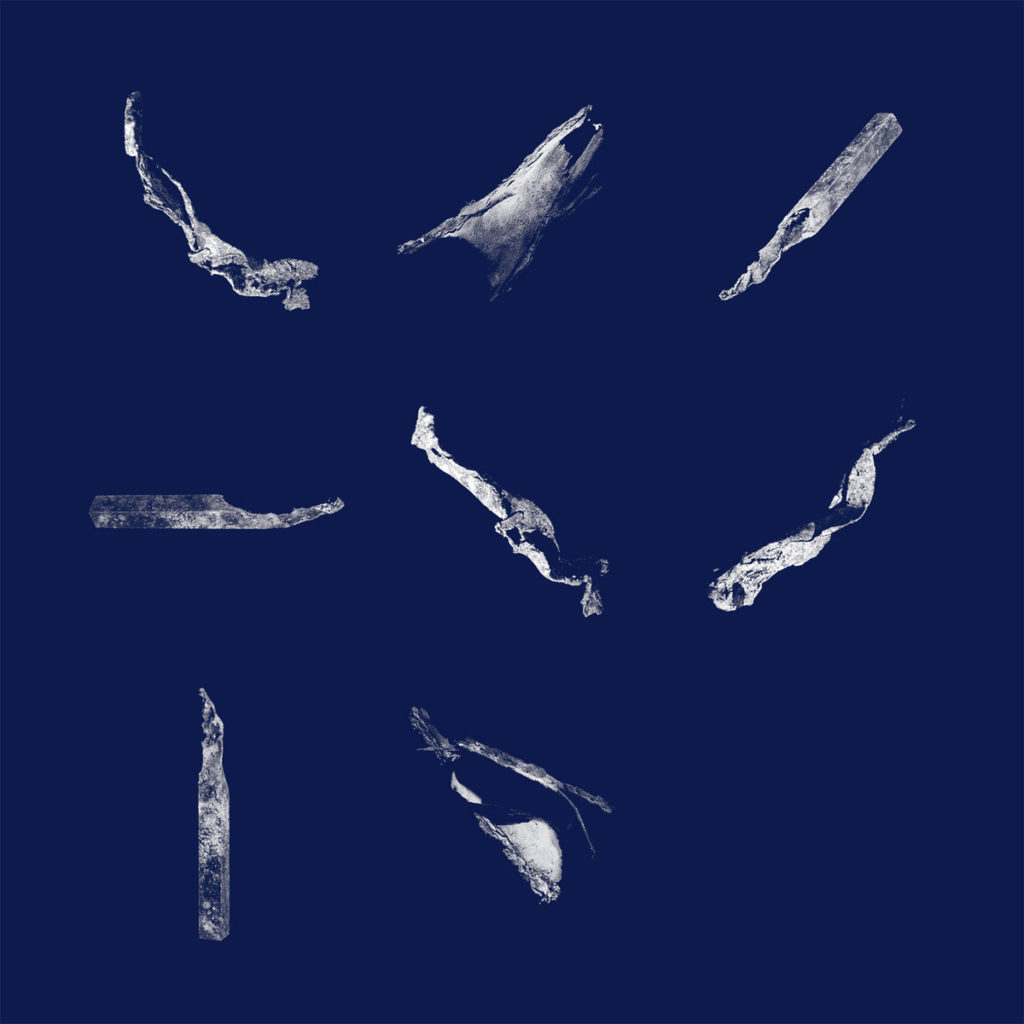Pierce Warnecke Audio / Video
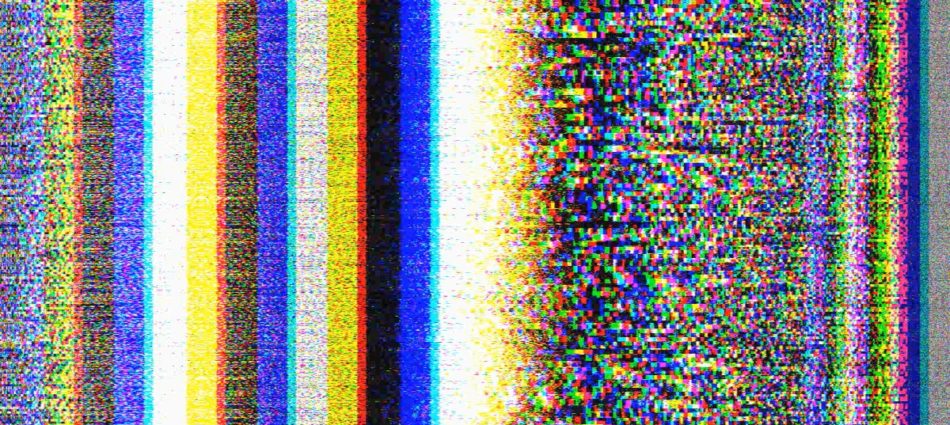
Room40
Many thanks to Lawrence English for mastering and releasing these albums, and more importantly for his continuous support in releasing quantity and quality experimental, ambient, drone and noise music on his inimitable Room40 imprint.
Music From Airports (2025)
How to describe an airport?
They are non-places of transience with zero individuality. Endless gray halls with fluorescent lights, glass and concrete made to isolate you from reality and time in a purgatory that is almost always the same, no matter which one you find yourself in. The only living things are the endless waves of humans who are fed in, sorted and sent back out of these giant climate controlled vivariums. Restricted spaces under surveillance full of exhausted traveler’s stumbling to their gates or waiting for hours in endlessly regenerating lines in jet lag-induced dazes, all of whom have one common goal: to go anywhere else but there. Sonically the airport is a nightmare. Giant reverberous rooms made of reflective materials filled with clattering rhythmic sounds; a textbook recipe for continuous and inaudible din, on top of which popular music is lightly sprinkled in a failed attempt to dissimulate the background noise.
I thought of ways to make my travel through airports a little more enjoyable. I naturally thought of Eno and his music made for airports, an idealized soundtrack to replace the ones there. And while I agree with him that the prevalent and unavoidable ‘muzak’ is tedious, I thought that instead of rewriting a new score for a space I had an aversion to, I could try to salvage what was already there: extracting small bits of the omnipresent music and turn it into something more to my taste. In French, the word ‘détournement’ fits nicely to this approach of turning something away from its original purpose (which is curiously also the word used for hijacking an airplane).
Each composition on this album stems from a single airport recording, usually less than a minute in length and always containing some kind of radio friendly music playing in the background. They were all done in haste on my phone; they should not be considered field recordings as very little care was given to the sonic environment and technical means employed. Each of these found soundscapes was then processed in many ways in my studio, but essentially ine recording gave one composition.
While ambient music is often referred to as furnishing music (Satie), in the sense that it is a partial component of reality, leaving room for other experiences, it has also unfortunately been co opted by television, advertisers, stores and Hollywood throughout the 20th century as a means to occupy you while you watch, wait, eat or buy. This is never more clear than in an airport. I don’t want to think of music as a filler for dull moments; I prefer to think that it needs only to exist for itself and for the listener, and not to make up for another experience lacking in substance. So, this music is not for airports. This music is for you, the listener.
Whether you’re standing in line with headphones or stuck in your car in traffic or in a quiet studio with nice near-field monitors or at the gate waiting for your delayed flight, I’m just happy you’ve taken the time to listen.
Deafened by the Noise of Time (2022)
‘The darkness does not lift but becomes yet heavier as I think how little we can hold in mind, how everything is constantly lapsing into oblivion with every extinguished life, how the world is, as it were, draining itself, in that the history of countless places and objects which themselves have no power of memory is never heard, never described or passed on.’ – W.G. Sebald, ‘Austerlitz’
Deafened by the Noise of Time is a speculative take on how sound might decay and disappear; a reflection on the unavoidable entropy and dislocation of all things over time through 4 compositions, one with video. The titled is borrowed from Julian Barnes’ novel ‘The Noise of Time’ (itself borrowed from Jewish Russian poet Osip Mandelstam), a fictional biography of Shostakovitch.
I first started working on the material for this album for a performance at Eglise Saint-Merry in Paris in 2017. Following the concert, I sat down to edit the music but struggled with the pieces, every time finding new flaws, unable to follow through with the original compositional ideas. Somewhat frustrated, I decided to strip down the musical content to form more bare-bone structures and look for a different principle or process to tie everything together.
For this, I shifted focus to a long running part of my video practice: the deterioration of things over time, where I use my camera with simple lighting and slow movements to focus on rusty, dirty, burned or broken found objects. I like the idea of these things being both recent and ancient, contemporary artefacts of a world in constant decay. I like the idea of being able to still sense memory on objects even when they’ve become almost entirely unrecognizable. I like how this pushes back against the inevitability of impermanence. I like the act of scavenging and reusing discarded objects to put them in new but uncertain light. I like to think of it as a kind of ritualistic transformation of ‘trash-to-treasure’, a conjuring of a thing’s entire past through imperceptible clues left on it’s surface.
For Deafened by the Noise of Time I wanted to apply these ideas to sound, and consider how a musical idea might disappear under an accumulation of interferences, as a kind of sonic sedimentation and erosion. External elements such as conversations, field recordings, generative noises, silence and inharmonic tones cover the original music similar to the way rust covers metal, or how memories dim and fade, or the way debris accumulates and compresses an object, casting it in stone. For these pieces I looked at Time as a continual burying of the present moment, leaving visible only small details of the ‘now’ (and the things within it) as echoes towards the future.
Memory Fragments (2016)
“Reality is precise; memory isn’t.”
Jorge Luis Borges, In Praise of Darkness
..
Based in Spain, composer and visualist Pierce Warnecke has developed an elegant auditory hallucination with his debut edition Memory Fragments.
Known widely for his collaboratarial works, this edition represents Warnecke’s first solo outing. Recorded over the better part of three years, Memory Fragments ties together is interests in electro-acoustic sound, field recordings and harmonic incongruities.
“A memory is a recording of senses with the mind as the medium,” Warnecke explains, “When a memory is recalled it is played back in the mind’s eye, but the experience is never as exact as the original moment. This makes memory a volatile storage medium, subject to transience.”
